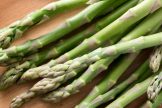There are 12 different Kangaroo paws, 11 different Anigozanthos species and one Macropidia fulginosa. All are from Western Australia. Many of the named cultivars available from the nursery are hybrids of these different species. For the purpose of the home gardener, it is easier to divide them into tall growing Kangaroo Paws and short growing Kangaroo Paws.
Tall growing Kangaroo Paws
(Flower stems above 1m up to 2m)
These are far and away the easiest Kangaroo Paws to grow. The toughest and longest lived of the straight species is Anigozanthos flavidus. These are tolerant of a wide range of soil conditions and humidity. All other species require absolutely perfect drainage, if that is supplied, they can live for years, otherwise you may only get the one season out of them. Breeding has produced a range of more resilient tall growing hybrids. Succulent and cacti potting mix in pots are a good option for Kangaroo Paws as they provide the necessary drainage.
Light conditions
Give as much light as possible. Ideally a full sun position.
Watering
Not as drought tolerant as you would think. Yes they require perfect drainage (except A.flavidus, which is more tolerant), but they also need regular watering when the plants are actively growing and flowering. The flower stems are quite fleshy and need water.
If in pots – try to avoid watering the foliage, this helps prevent fungal issues like black ink spot.
Temperature and humidity
Not frost tolerant. Only Anigozanthos flavidus copes with humidity, all other Kangaroo Paws do best with good air movement and in an open warm sunny position.
Fertilising
Use an organic fertiliser in early spring. Anigozanthos are not phosphorus sensitive (Macropidia are phosphorus sensitive)
Pests and Diseases
Keep an eye out for slugs and snails. You can use a pet friendly bait like Multiguard to protect them.
Black Ink Spot is the main problem with Kangaroo Paws, it is a fungal problem. Try using a fungicide for roses or simply cut to the ground (almost) and let the rhizomes reshoot.
Maintenance
To improve overall flowering, both quantity on length of flowering, when the flower stems just begin to open their first flowers, cut every second one down by half (you can use these as cut flowers). The remaining stem will branch out and send up new flowering stems. Use clean sharp secateurs and angle the cut to 45 degrees.
If Inkspot gets bad, you can cut entire plant tight back to 5cm or so, and start over again. Commonly do this after it finishes flowering or in early spring. The plant will reshoot from the underground rhizomes.
When an established clump is large and vigorous, in spring or early autumn you can cut the leaves back by 2/3, lift the rhizomes, clean and split into sections. Replant or repot and after a few months the rhizome will reshoot.
Black Kangaroo Paw (Macropidia fulginosa)
Their wonderful flowers make it worth trying but you need to follow a few rules…
• Best grown in pots, or else plant where you are certain of perfect drainage, good sun and some air movement. Under the right conditions will last up to a decade.
• Prone to ink spot so avoid watering the foliage.
• Sensitive to phosphorus – essential you use a native fertiliser in spring.
• Keep water up to them when forming the flower stems and when flowering.
• Frost sensitive.
• Keep an eye on the flower, and as it starts to look a bit shabby, cut down right to the base. You may (or may not) get a second flowering.
• When all flowering is finished, this is the time to cut the whole plant back fairly hard (by 2/3) and allow it to regenerate with fresh foliage (be patient).
Small growing Kangaroo Paws
(Flower stems below 1m)
These are extremely floriferous, but NOT long lived. I prefer to treat them almost as annuals, and if I get a second year out of them, there is much back patting. Unless perfect drainage can be supplied, grow in pots using succulent and cactus potting mix. When planting make sure you keep the crown above ground level to avoid crown rot.
Light conditions
Give as much light as possible. Ideally a full sun position.
Watering
Not as drought tolerant as you would think. Yes they require perfect drainage but they also need regular watering when the plants are actively growing and flowering. The flower stems are quite fleshy and need water.
If in pots – try to avoid watering the foliage, this helps prevent fungal issues like black ink spot.
Temperature and humidity
Not frost tolerant. Does best with good air movement and in an open warm sunny position.
Fertilising
Use an organic fertiliser in early spring. Potash applied in winter may help with both flowering and resistance to Black Ink Spot as it increases the thickness of the cell walls.
Maintenance
The smaller varieties have a series of leaf fans, each fan produces a flower stem. As each flower stem fades and dies, cut that individual stem and associated leaf fan down. Do this individually (yes, it is a bit more work) and you will keep the entire plant looking vigorous and heavily flowering for many weeks if not months. Do not cut the entire plant back as it may kill it.
Pests and Diseases
Black Ink Spot is the main problem with Kangaroo Paws, it is a fungal problem. Try using a fungicide for roses.
Keep an eye out for slugs and snails. You can use a pet friendly bait like Multiguard to protect them.
 Important note about plant availability. Important note about plant availability.There are hundreds of factsheets on our website provided for your information. Not all plants will be available at all times throughout the year. To confirm availability please call (03) 8850 3030 and ask for the nursery. |











